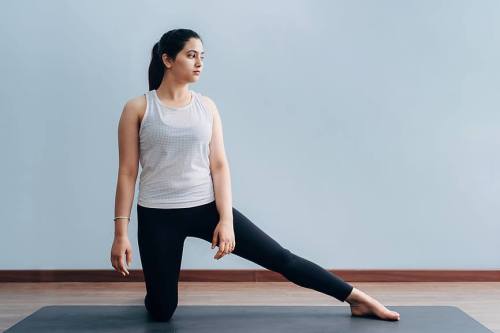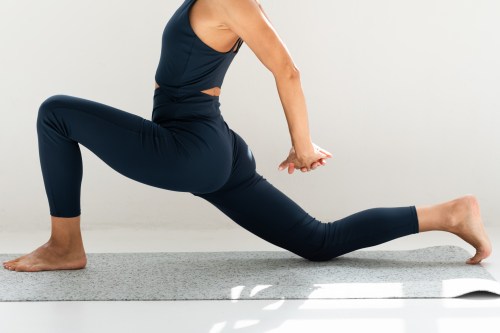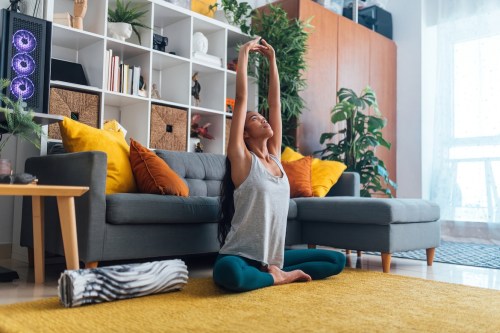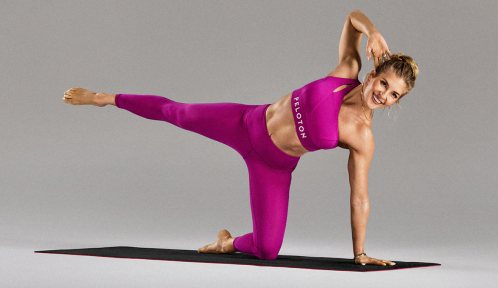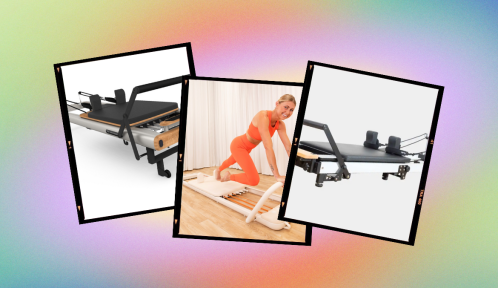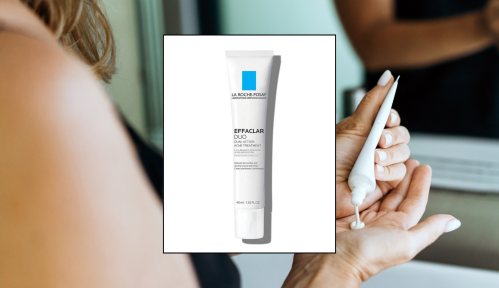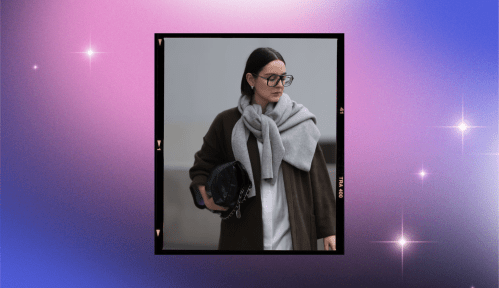There’s a reason more-and-more people are turning to fitness as a form of emotional release. We’re living in an era that’s being deemed “The United States of Stress,” where chronic anxiety has become a widespread epidemic, especially for millennials and Gen Zers who are consistently clocking higher stress levels than our elders. Along with the dangerous health issues that stress introduces, Americans are internalizing these feelings, finding distractions, and nurturing others—when what we need is an outlet.
Enter Yin Yoga, the inclusive, easy-does-it practice based on holding yoga poses for lengths of time, rather than rapidly flowing through them. Yin not only produces an opportunity for physical strength and emotional release, but it revolves around the assumption that there is no standard alignment, no such thing as a standard body, and that means way fewer nerves about jumping into your first class.
There’s no perfect standard in Yin Yoga
“As many of us in cities live in a constant state of high stimulation and ‘fight or flight’ mode, it’s necessary that we include ‘yin’ activities to keep our system healthy—one of the keys to longevity in our training routine is efficient physical and mental rest,” says Vanessa Michielon, the London-based movement instructor who had me weeping during my first Yin Yoga session on a faraway beach at Kamalame Cay’s Silver Linings holistic retreat, where she hosted a sunset class overlooking Bahamian sands and dazzling mirror ponds.
After explaining the importance of setting intentions (an idea I’d previously ignored) and how to hold stretches comfortably for uncomfortable periods of time over the course of the session, Michielon wrapped with an ancient poem spoken in her delicate Italian accent. I didn’t bother to hold back the tears streaming down my face, and I wasn’t alone. Aside from easing my tight shoulders, there was clearly more happening than what was physical. “We sometimes live with chronic tension in certain areas of the body,” explains Michielon. “A contemplative practice of letting go can really help us rediscover the capacity to be open and soft.”
However, that exploration and identification of what needs to move within someone is unique to each person. Yin Yoga is based on the assumption that there is no standard alignment, as there is no such a thing as a standard body. “After years of fighting against my skeleton in Ballet, it was so liberating to understand that there will always be something that will not be possible for me but is possible for another person, and vice versa,” Michielon shares. “In the simplicity of a Yin pose, one size does not fit all, and that’s one of most important positive messages that I want to pass to my students and I hope they can transfer to other practices. We do our best to develop our proficiency in what we do, but we also learn how to accept our limitations and work around them, instead of blaming our bodies for what we cannot be.”
Consider Yin a way of training mindful attention and focus necessary to any other physical practice. “I teach many professional and amateur athletes who find Yin very useful to recover faster by enhancing circulation and lymphatic flow, as well as to prevent injuries and improve their range of motion for better overall performance.”
The practice unites the physical and the emotional
For Michielon, her dive into Yin happened—as so many very good things seem to—quite naturally. “I could see myself learning where I would hold tension and how to release it with the breath, understanding my safe range of motion and the effects of different configurations at the physical and mental level.” She notes benefits to the practice, in addition to stress reduction, that range from healthier joints and better fascial elasticity to injury prevention for athletes who rely on activities like running and dancing. “It’s very helpful in injury prevention or recovery to understand the very personal difference between positive stress and harmful pain,” Michielon explains.
Traditional Chinese Medicine, which informs Yin Yoga, draws between blockages in pathways in the body and the expression or repression of specific emotions. For Michielon, her first classes were a revealing experience. “In my Yin teacher training, I had a couple of breakdowns and relieving tears—the turmoil I felt in that vulnerable space of stillness brought to the surface pain and past wounds, which I finally decided to face,” she admits.
And the physical practice sometimes matches the emotional intensity. “Yin poses in themselves might not be as relaxing as we might think,” she notes, adding that coming to a place of “safe discomfort” in class is part of learning how to cope in everyday life. “We deliberately put ourselves in a condition of vulnerability, where we feel triggered, but as we become more familiar with it, we can become more resilient, we let go more easily,” Michielon shares. The relief often arrives in the “rebound phase,” when the poses are released (especially in the final relaxation, Savasana) blood and energy rushes back into the body. While Michielon encourages her classes to utilize Yin Yoga to stretch and improve flexibility, she believes the practice can work on a much deeper level when used as mind training “as a place to observe our emotions and react to them.”
What does that look like? “Setting an intention, whatever it is, means we are also using the opportunity to work on psychological enquiry and self-development,” she explains, offering up internal questions like “Am I able to stay with the discomfort, to breathe slowly and release unnecessary tension when I feel triggered?” or “Can I resist the temptation to give up as soon as things get more difficult?” and even “Can I observe myself with loving kindness and no judgement, and therefore learn to accept myself totally in my weakness?”
What to expect from a Yin Yoga class
Exactly what does a typical class look like? “Start with gentle mobilizations of the spine and joints, connecting movement with breath so that the first long-held position comes from a place of spaciousness every body part feels fully alive,” says Michielon, who designs sequences in a fairly traditional way (based on meridians of the body and associated organs) and offers about six positions in an hour. “In the position we try not to move unless we experience pain or don’t feel any stretch,” she explains, noting that muscles need less oxygen in Yin’s stationary positions so breathing can be quiet and the mind can slow down, ultimately triggering the parasympathetic nervous system “responsible for healing our body and managing stress.”
Most positions are seated or lying on the back or belly, some are standing or against the wall, and many use props like pillows and blocks for support since “if the bones are supported, the muscles can relax so the stress of the pose can go in the deeper connective tissues.” Before the final Savasana relaxation period, you’re encouraged to rest for a minute after each pose in a phase called “the rebound of the Chi.”
For me, one of the most moving moments of Michielon Yin experience emerges in her spoken word closing, which she often draws material from pieces by Rumi, Eckhart Tolle, and Lao Tzu. “The final Savasana is really the moment where we let go of our fences so that words can land in a deeper place and maybe plant a small seed of change.”
Here’s what happened when one yogi practiced on a cork mat and this is how to give your mat a good scrub down after class.
Sign Up for Our Daily Newsletter
Get all the latest in wellness, trends, food, fitness, beauty, and more delivered right to your inbox.
Got it, you've been added to our email list.
